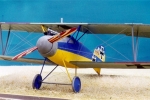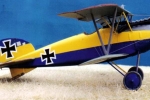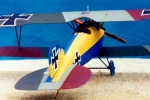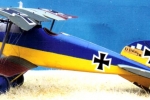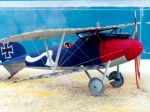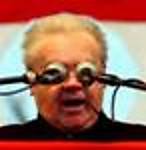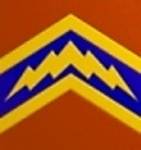1⁄35Portfolio - Jackflash
6
Comments

Note that some firewalls will show the images all the way at the bottom of this page
1. Alb. D.V 1119/17 as flown by Oblt. E. Von Althaus while commander of Jasta 10 during July 1917.
2. Alb. D.V 1148/17 as flown by Ltn. Hans Adam commander of Jasta 6 before 2 Aug. 1917.
3. Alb. D.III (OAW) 1650/17 as flown by a home defense flight in Armee A sector about Nov. 1917. Here the pride of the German Air Service, Ltn. Rumplemeier is helped from his plane (Albatros D.III, OAW built) after a daring landing. Strictly for humour folks.
4. Alb. D.V 2042/17 was a assigned to training duties at Lübeck-Travemunde and is known to have been destroyed in a landing in July 1918. Its pilot Ltn. Wegener is listed as KIC. This diorama took a first place at the IPMS USA Nationals in 2003.
5. Alb. D.III (OEF) 253. 257 This kit is converted to represent a late model Alb. D.III 253.257 Sold to the Polish Air Service in 1919-20. The white disc with the red lightning bolt is from the 13th Squadron stationed in Krakow depicted with final version national markings in all positions except on the rudder. The Oeffag Triangle is from Glencoe. The personal marking is the “Death in a red robe”. The sworl pattern decals are from Chandelle. The serial is in the range of those sold to the Polish Air service but its actual service is unknown in the references I have perused.
6. Alb. D.V 4677/17 Consider this the hypothetical Albatros D.V machine of my alter ego from the Royal Fokker thread, Oblt. Stefan Löwenson when he served in Jasta 78b in about autumn 1917.
7. Albatros D.III (OAW) 5145/17 of Jasta 46, 27 June 1918. Flown by Vzfw. Steinbrecker. This ‘provisional scheme is based on existing photographs of Jasta 46 machines in their general personal marking applications.
8. Albatros D.Va 5253/17 was flown by Ltn. Hans Sakowsky of Jasta 14. He was brought down and made a POW on 13 Nov.1917 in this machine by anti-aircraft fire. In the ensuing landing he wiped off its landing gear in a "pancake landing." It was given the British capture number G.90 it was repaired & displayed with other captured aircraft in the 'Agricultural Hall' in Islington. All of which had half of their coverings removed to display internal structures to public view for the price of 1 penny. Proceeds went to RAF hospital Fund.
9. Here is my version of Alb. D.Va 5360/17 in FA300 after an inflight collapse of the left wing tip. Titled "Nice landing herr Leutnant." This is the Eduard 1/48 kit #8109. At the beginning of 2002 we saw the introduction of Eduard's release their 'neu' mold of the Albatros D.V kits (Feb, #8109 and in March #8110 Profipack.) The new process allows finer more exacting details be included in the overall plastic mold. It easily competes with any of the ‘Tamigawa' companies processes. To simulate the Wood panel sections of the fuselage I used applications of acrylic and enamel paints. Rigging is monofilament, The cockpit is detailed to include structure and equipment using modified kit items and Eduard’s brass fret #48218. Lozenge decals are Eagle Strike 5 colour Camouflage sheets. National markings are kit items. Plumbing and landing gear struts are brass rod bent and cut to shape. Propellor is laminated wood carved to shape. The upper left wing tip was scratchbuilt and cover with layers of decal film. This kit represents a Johannistahl built Albatros D.Va 5360/17 flown by Ltn. Victor Häfner of FA300 & 304. Sometime in June - July 1918 after the ground crew had completed repairs To this machine, Ltn. Häfner took it up for a test flight one morning in his pajamas. At about 3000 ft the pilot heard a loud ‘crack’ the resultant emergency landing was due to a collapsed upper left wing tip. He managed to land at Afuleh airfield. This was one of several instances where the Top wing tip of a Tropical Albatros D.Va failed. An interesting note is that this machine doesn’t appear to have the outboard stay wire seen typically on Western front Albatros D.Va types.
10. Alb. D.Va 5390/17 was flown by Ltn R. Clauss of Jasta 29 when he was brought down as a POW in one of the strangest combats of the war, 17 December 1917. Lt Clauss was the pilot of the Albatros that is now part of Australian War Memorial collection. On December 17th, 1917, the RE8 crew of Lt Sandy and Lt Hughes of 3 Sqn AFC were attacked by six Albatros Scouts, the battle lasted for several minutes, long enough for two other 3 Sqn AFC RE 8 crews to see, fly to and join in the combat. Clauss was wounded in the fight with Sandy and Hughes and his aircraft landed behind the 2nd Division AIF lines. The 3 Sqn AFC men who collected the Albatros reported that the Albatros had been holed in the petrol tank. Clauss' boots which are now in the AWM collection, have two holes in them, one thigh high, the other in the foot. The foot hole is rust coloured from blood. One of the Observers of the other RE8's was Hodgson who fired 400 rounds in the engagement, as the other Albtros aircraft had been driven off, Jones the pilot checked on Sandy and Hughes, their RE8 was flying ok, but neither Sandy or Hughes acknowledged Jones or Hodgson, who assumed that Sandy and Hughes were fine and they flew off to Bailleul for more ammunition. Sandy and Hughes though were not heard from in the squadron that night. The next day a telegram from the Hospital at St Pol arrived with the detail of Sandy and Hughes's bodies had been recovered from a safely landed RE 8! The Doctor concluded the pair had been dead for several hours. Captain Ross of 3 Sqn AFC was sent to the site and discovered the RE 8 had only a broken propeller and damaged right wing, the throttle was wide open. The post mortem of Sandy and Hughes deduced that they had been killed by the same bullet, passing through Hughes's lung and into Sandy's skull. 3 Sqn AFC pieced together what had happened the previous day. Sandy and Hughes were killed in the combat with the Albatros aircraft. The RE 8 had flown in wide circles, slowly being blown and drifting North-West until running out of fuel, 50 miles away from the original combat, and landing rather gently for an unmanned aircraft. The Albatros of Clauss was recovered by 3 Sqn AFC and became G.101 before being presented to the Australian Government.
11. Is a Johannistahl built Alb. D.III flown by Leutnant Joachim von Bertrab of Jasta 30 was from the first production series (1910-2200/16) in the spring 1917. He arrived from Flieger Abteilung 71 on 6 March 1917 and on 12 Aug 1917 was brought down behind allied lines and made a POW flying a black coloured Alb. D.V 2191/17. Four of Ltn. von Bertrab’s five victories were acquired on 6 April 1917. Several versions of the Albatros D.III colour scheme can be considered having the fuselage as black or dark purple. The last version comes from the documents of revered historian A. E. Ferko. We find his hand written notations on an image of this aircraft as “dark purple.” The effects of the orthochromatic black and white film of the day tends to show this color whatever it is, as very dark. At least one British pilot specifically mentions a German pilot as “our man of the mauve.” Another pilot who became Ltn. von Bertrab’s victor is quoted in the weeks before their final fight as having other contacts with the “purple man.” I chose the dark purple for this build.
12. Represents the standard built Johannistahl Albatros D.V (serial unknown) flown by Oblt. R. Flashar, commander of Jasta 5 in about May 1918. This is the third issue Eduard kit #8030.
13. The Albatros D.III from production batch 1910-2200/16 represents the machine flown by Ltn. des Res. Hermann Frommherz while he served with Jasta 2(Boelcke) during April - May 1917. It should have a white tail unit ( Horizontal and vertical with a narrow black band around the fuselage at the juncture of these units.) This was the Jasta’s unit marking during time. In all other respects the profile is generally accurate for Frommherz’s “Blau Maus”. The black and white sash that wraps around the fuselage needs to be fitted so that the sash slightly overlaps the forward and lower fuselage cross arms. The directions shows a gap between these items and this is not accurate for the profile. The term “Blau Maus” come from a nickname given to Albatros C.III two seaters that in one production batch came from the factory with an overall coat of light blue. The unit markings on these machines were often in black and white. It has been speculated that Ltn. Frommherz may have employed the paint scheme from his early days on the Albatros D.III we see here.
14. An Alb. D.V from Jasta 17 flown by Oblt. Kurt von Rudno-Rudzinsky - from about 5 Oct. 1917 to 5 Jan. 1918. 'Gisi' = 'Ghistelle.’ From the Eduard kit #8110.
15. Here is a an Alb. D.III diorama called "Home from the Front." The mechanic figure offering up a cup-o-java is a CMK figure. The figure posing as Jasta 5 pilot Ltn Strobel is unfortunately Out of production from Van's Scale Models. The Albatros D.III was built before the Eduard kit was available from a heavily modified Glencoe Alb. D.III fuselage and resin poured wings of the Eduard Alb.D.V kit.. It took three attempts to get it right.
16. This represents the early production Alb. D.V flown by Rittmeister Manfred von Richthofen on 6 July 1917 when he received a glancing head wound.
17. This is Alb. D .Va 7161/17 of Jasta 46w as it looked before being captured in April. 1918.
References:
1. Cross & Cockade USA Vol. 4 #2, Pp.195-7 1963.
2. Cross & Cockade USA Vol. 5 #1, Pp83-4 1964.
3. Cross & Cockade USA Vol.12 #2, p.190 1971.4. Cross & Ccokade USA Vol.23 #3, Pp.273 -281 1982.
5. Cross & Cockade Int. Vol.26 #3, Pp.133-130, Esp p.118 1995.
6. Albatros D.Va-German Fighter of WWI by Mikesh, Smithsonian Inst.Press,1980.
18. This is the Eduard 1/48 scale kit # 8017 with a JP productions figure. In his marvelous book, Sopwith Scout 7309 the Australian Sopwith Pup pilot Sir Gordon Taylor (66 Squadron) recorded his impressions of flying the captured Albatros D.III 2015/16, ( G.42.) "...I brought the machine in...Its personality was utterly different from our own airy Sopwith scout. Ours was , in some indefinable way, a sporting weapon, with a slightly smiling, light-hearted personality; a machine which did not identify itself readily with the slaughter of war. But this Hun was a war machine, a weapon of ruthless efficiency; cold-blooded in the metal of its V interplane struts, the Spandau guns, the big engine under the streamlined cowl in the nose, and the instruments and fittings in the cockpit... My thoughts, as I got out of the Albatros' cockpit, can be...expressed, "Give me this aeroplane to fight the war. Let me keep the Sopwith Scout to enjoy myself in the air when the war is won..." It was on 4 June 1917 that Ltn. Georg Simon is taken POW at 19.25 hours between Fontaine and Heniel near Arras, in Albatros D.III 2015/16.
19. The Eduard’s 1/48 scale Albatros D.III (OAW), kit #8038 represents the late production Albatros D.III (OAW) flown by Hauptmann Walz from Jenin in Palestine when he was assisting FA300 and Jasta 55F as a flight commander. In mid to late Oct 1917 with the arrival of additional German Fl. Abt., sixteen Albatros D.III (OAW) also arrived.
20. From the Eduard drawings in their Profi-pack kit #8035, Ltn. Werner Voss’ Albatros D.III seems to be a combination of two machines. There is some good current research that says there were two different machines that were marked similarly. He was assigned his first Albatros D.III from the first production series (D.1910/16 - 2200/16) in the early spring 1917 while serving with Jasta 2 (Boelcke.) The upper surface camouflage was three colour. Cowling and spinner were the factory colour of grey green. The pilot’s step was rounded at the top. The radiator was centered on the upper surface of the top wing..
His second machine was from the third production series ( D.750/17 - 799/17.) If this machine was already with him when he transferred to Jasta 5 it had not been given these personal markings yet. There are a series of photos with this machine in a tails up position ( The radiator is seen offset to the right of center and so the plumbing was now not directly centered in front of the pilot.) and Ltn. Voss standing on a ladder painting the white of the Haken Kreuz and heart border on the pilot’s left side. The spinner (and later the wheel covers) on this machine were probably red in colour as this was the Jasta 5 unit marking at the time. The upper surface camouflage was two colour. The cowling ring had five small intake vents behind the propeller. This was typical for aircraft in this series. The pilot’s step was square. The radiator was offset to the right of center and so the plumbing was now not directly centered in front of the pilot. This later machine may also possibly with him when he transferred to temporary commands of Jasta 14 & 29 during the spring and early summer months of 1917. Though holder of the “Blue Max” (Orden Pour le Merite) he had overstepped his chain of command at Jasta 2 (Boelcke) and written complaints about his commander, Hauptmann Walz to Armee headquarters. This series of transfers were meant to teach the young reserve leutnant what command means and even a hero needs to understand he has his limitations..
21-23. This is Alb. D.V 4594/17 as flown in Oct 1917 by Ltn. Paul Straehle of Jasta 18. He took this machine with him to Jasta 57 when he was named commander.
Comments
All i can say is WOW.
Excellent models Stephen. My favorite is the Albatros D.III (OAW) 1650/17, the way it has broken in half is superbly built and a great dio.
Andy
DEC 15, 2006 - 05:41 PM
Hi Andy!
Thank you for your reply!
I would like to thank Stephen as well. It's not common to see such a high number of high quality Albatros models build by the same modeler! In fact I think it's the first time I see something like that!
I'm looking forward to see the other collections... Camels, Fokkers?
Jean-Luc
DEC 18, 2006 - 12:35 AM
Lars & Andy, my sincere thanks for the very kind words. I am open to any questions concerning my builds. Jean-Luc your help is always appreciated. Maybe we'll do the Fokker Dr.I or Sopwith types next?
DEC 18, 2006 - 07:50 PM
A fabulous portfolio Stephen.
All of them works of art in my book.
Sopwith next?,,,sounds like fun to me
Nige
DEC 18, 2006 - 08:10 PM
Greetings all; Part two is in the works. Kere is a bit of fun on the differences between the Alb. D.V & D.Va.
There was a lot of difference and the wings were not interchangable though they were the same dimmensions. The main difference lay in the routing of the aileron control cables.
In the D.V they went up from the cockpit up between the guns , through the top wing to the ailerons and were actuated by bell crank control horns that had external shrouds. The engine was the late production 170hp Mercedes D.IIIa.
In the D.Va they went through the lower fuselage sides through the lower wing to the area behind the lower end of the interplane Vee struts and exited upward to a cutout in the wing and a control bar extending from the aileron. The engine was the 180hp Mercedes D.IIIaü. Here is an image from Mark Miller's renderings of a D.Va wing. Used with his permission of course. (Another WNW artist by the way.)
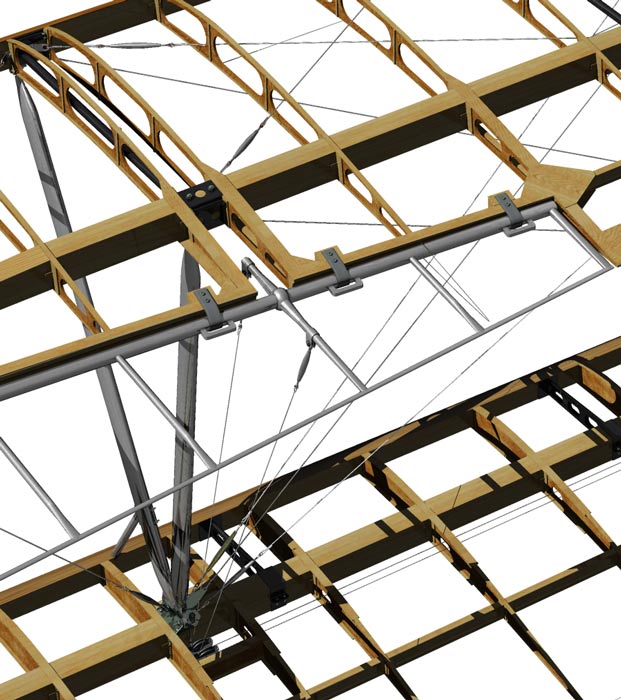 The control column was different in its cable attachment points and the height of the top wing was nominally different as well.
The control column was different in its cable attachment points and the height of the top wing was nominally different as well.
 The control column was different in its cable attachment points and the height of the top wing was nominally different as well.
The control column was different in its cable attachment points and the height of the top wing was nominally different as well.FEB 13, 2007 - 02:12 PM
Copyright ©2021 by Stephen Lawson. Images also by copyright holder unless otherwise noted. The views and opinions expressed herein are solely the views and opinions of the authors and/or contributors to this Web site and do not necessarily represent the views and/or opinions of AeroScale, KitMaker Network, or Silver Star Enterrpises. Images also by copyright holder unless otherwise noted. Opinions expressed are those of the author(s) and not necessarily those of AeroScale. All rights reserved. Originally published on: 2006-12-16 00:00:00. Unique Reads: 13334




